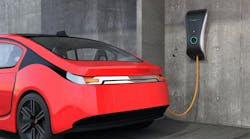Over the past year, the damage wrought by Superstorm Sandy and the 10-year anniversary of the East Coast blackout in August 2003 have inspired a round of rumination about the future of the electric power grid. Prescriptions for avoiding or dealing with similar events in the future key on smart grid technologies.
After a surge in investment spurred by $4.5 billion in funding from the American Reinvestment and Recovery Act of 2009, the market for smart grid technologies such as smart meters is expected to level off, though demand for the products should remain strong for several reasons.
Utilities are beginning to share hard data from those smart grid pilot projects that will guide future investments. PPL Electric Utilities, Allentown, Pa., completed a three-year, $38 million stimulus-supported smart grid pilot project and reported that customers are already seeing a 38% improvement in service reliability, meaning fewer power interruptions and shorter outage duration. The project involved installation of smart meters, a new distribution management system and upgrades to 10 substations.
Several factors will be key in driving sales of smart grid technologies over the next few years. Continued attempts to reduce the impact of weather-related outages and enhance the grid’s resilience to other disruptions, the need to comply with renewable power portfolio mandates and sustained demand among electric power users large and small for tools to better manage their energy usage will play significant roles.
Navigant Research is forecasting sales of smart meters for commercial and industrial buildings will total more than $19 billion worldwide from 2012 to 2020. Annual revenue will flatten and decline slightly after mid-decade, from $2.2 billion in 2014 to $2.1 billion in 2020, the study concludes. The key driver in sustaining those sales will be continued interest among commercial and industrial users in managing their energy consumption.
“Savvy C&I customers who seek to drive down operational costs have realized that smart meters can help accomplish that goal, especially when linked with building energy management systems,” says Neil Strother, senior research analyst with Navigant Research in a release on the study. “For many businesses, even a small percentage reduction on their electric bill is more than enough when electricity costs can run to tens of thousands of dollars or more per month.”
Another recent study by Navigant looks at smart meters’ growing role in demand response scenarios. It found that utilities are increasingly shifting their focus from the deployment of advanced metering infrastructure (AMI) technology to distribution automation (DA) applications that can reduce both capital and operating costs, as well as improve the efficiency and quality of the power grid. The study said integration of DA with AMI is expected to help utilities increase the financial benefits from their smart grid investments. The group expects the global installed base of smart meters for distribution automation applications will grow from fewer than 10 million in 2013 to 143.2 million by 2020.
The White House published a report in August, “Economic Benefits of Increasing Electric Grid Resilience to Weather Outages,” that seeks to quantify the economic costs of weather outages and the opportunities, techniques and technologies that can help avoid or mitigate future outages. Along the way, the study identifies a number of smart grid technologies including smart meters, automated feeder switches, synchrophasors and software tools as key priorities for reducing the cost of weather-related outages.
In the decade since the East Coast blackout, NEMA has been among the organizations looking for ways to contribute to better grid stability. NEMA established two major programs focused on the technical and policy aspects of improving the performance of the electrical grid: the Emerging Technology Panel (ETP) and NEMA Strategic Initiatives (SI) program.
ETP is a group of 20 chief technologists and senior scientists from NEMA membership. Meeting twice a year, ETP discusses major challenges faced by their utility and commercial customers to identify future directions that will be beneficial to the industry and consumers. The SI program tackles the technical and policy hurdles necessary to implement ETP’s vision.








